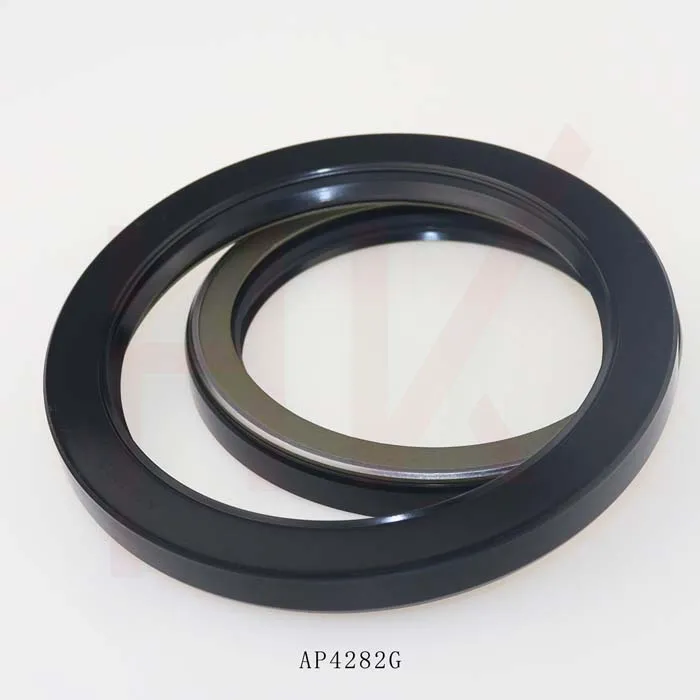আগস্ট . 31, 2024 11:57 Back to list
hydraulic cylinder oil seal
Understanding Hydraulic Cylinder Oil Seals
Hydraulic systems are essential in various industries, providing the necessary force and motion to operate machinery and equipment. At the heart of these systems lies the hydraulic cylinder, a critical component that converts hydraulic energy into mechanical work. One key aspect of maintaining the efficiency and functionality of hydraulic cylinders is the use of oil seals.
What are Hydraulic Cylinder Oil Seals?
Oil seals, also known as shaft seals or lip seals, are designed to prevent the leakage of hydraulic fluid and to keep external contaminants out of the hydraulic cylinder. They play a crucial role in the overall performance and longevity of hydraulic systems. Typically made from rubber or polymer materials, these seals are engineered to withstand high pressures and temperatures inherent in hydraulic applications.
The Importance of Oil Seals in Hydraulic Cylinders
The primary function of oil seals is to maintain the integrity of the hydraulic fluid within the cylinder while preventing dirt, dust, and moisture from entering. This is vital, as any contamination can lead to wear and tear on the cylinder's internal parts, ultimately resulting in system failure. A well-functioning seal ensures that the hydraulic fluid operates at optimal pressure, enhancing the efficiency of the entire system.
Moreover, oil seals help in maintaining the hydraulic fluid's characteristics. Hydraulic fluids often contain additives that can degrade when exposed to air and moisture. By preventing exposure, oil seals contribute to the longevity of the hydraulic fluid, reducing the need for frequent replacements and thereby lowering operational costs.
Types of Hydraulic Cylinder Oil Seals
hydraulic cylinder oil seal

There are several types of oil seals available for hydraulic cylinders, each designed for specific applications. The most common types include
1. Lip Seals These have a flexible lip that makes contact with the moving surface, creating a reliable seal. Lip seals are popular due to their effectiveness in preventing leaks.
2. U-Cups Shaped like a U, these seals are designed to provide a tight fit in the cylinder. They are particularly effective in high-pressure applications.
3. O-Rings These are circular seals that fit into a groove to prevent fluid leakage. They are often used in combination with other seals to enhance sealing capabilities.
Choosing the Right Oil Seal
Selecting the appropriate oil seal for a hydraulic cylinder involves considering several factors, including operating temperature, pressure, and the type of hydraulic fluid used. Additionally, the material of the seal is crucial in ensuring compatibility with the hydraulic environment. Using the right seal not only enhances the performance of the hydraulic system but also extends the lifespan of its components.
In conclusion, hydraulic cylinder oil seals are vital for the efficient operation of hydraulic systems. By preventing leaks and contamination, they ensure that hydraulic machinery functions optimally, ultimately enhancing productivity and reducing maintenance costs. Understanding the role and types of these seals can greatly assist operators and technicians in making informed decisions for maintenance and replacement.
-
Unlocking the Potential of Hydraulic Systems with Essential Sealing Solutions
NewsAug.06,2025
-
Unleash the Power of Your Hydraulic Systems with Our Premium Seal Kits
NewsAug.06,2025
-
Specialized Hydraulic Seal Kits for Breakers, Pistons, and Presses
NewsAug.06,2025
-
Revitalize Hydraulic Systems with Premium Repair and Seal Kits
NewsAug.06,2025
-
Fortify Your Cylinders with Premium Sealing Solutions
NewsAug.06,2025
-
Elevate Hydraulic System Reliability with Specialized Seal Kits
NewsAug.06,2025
-
TCN Oil Seal Metal Ring Reinforcement for Heavy Machinery
NewsJul.25,2025
Products categories
















